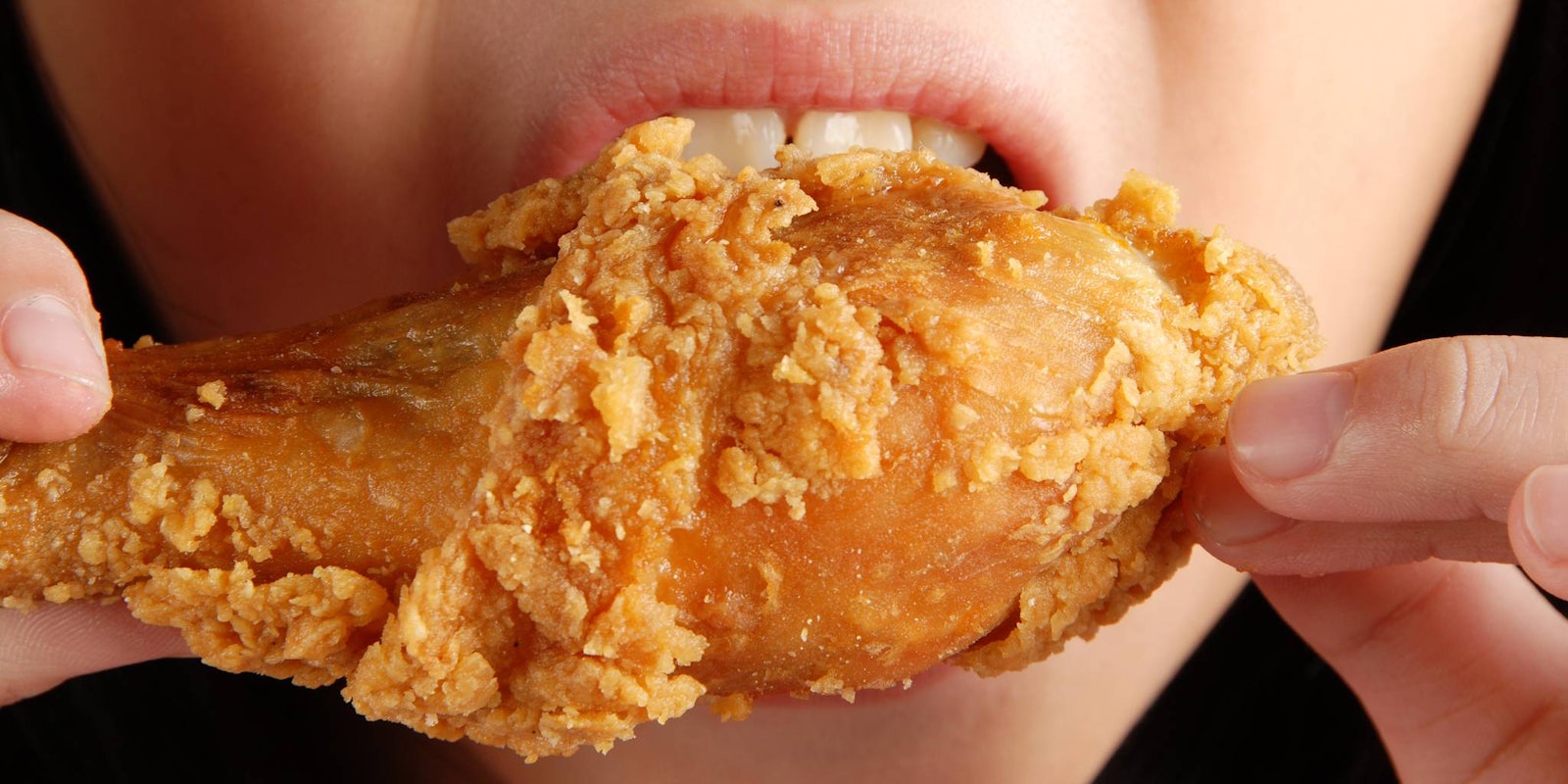A New Jersey school district has apologized after serving fried chicken at a high school last week in what was said to be in celebration of Black History Month.
On Feb. 16, the lunch menu at Hopewell Valley Central High School in Pennington, New Jersey, also offered sweet potato casserole, sautéed spinach, macaroni and cheese, cornbread, and peach and apple crisp, according to NJ.com.
School apologizes for fried chicken menu for Black History Month https://t.co/7BcT8azPU0 pic.twitter.com/KUZcajYCW7
— njdotcom (@njdotcom) February 20, 2017
CBS New York reported the school received several complaints from residents within the district who said the menu choices were offensive and played upon racial stereotypes.
In a statement, District Superintendent Thomas A. Smith apologized, saying that the menu was chosen by the district’s food service vendor, and that because it was chosen without context or explanation, he agreed it reinforced racial stereotypes.
The vendor’s vice president Cathy Penna wrote to NJ.com that one of the directors worked with the high school to create a menu that would celebrate Black History Month, and that the company tries to offer diverse menus in respect of different cultures.
“The suggestion was to do something to celebrate soul food,” Penna wrote. “The director at this location never intended to do anything that would offend anyone and deeply regrets the decision and understands that it could have been taken out of context.”
Historian Neil Brunson, however, told CBS New York that he felt the school had good intentions but needed to teach students about the meaning behind soul food.
Though, to be clear, despite the teachable moment that soul food could have ignited, there is a problem in specifically choosing fried chicken as a means to celebrate black history and culture. The notion that black people “love” fried chicken dates back to the blackface of minstrel shows, and was part of an image that white people perpetuated in order to negatively portray black people.
Claire Schmidt, a professor at the University of Missouri who studies race and folklore, told NPR’s Gene Demby in 2013 that the stereotype was rooted with the racist Birth of a Nation, the film from 1915 about the founding of the Klu Klux Klan: In a scene where actors portrayed rowdy “shiftless black elected officials” meant to show the danger of letting black people vote, one of the men vigorously ate fried chicken.
“That image really solidified the way white people thought of black people and fried chicken,” Schmidt told Demby.
Hopewell Valley Central High, a school that’s 82 percent white and less than 4 percent black, is far from the first (and certainly aren’t the latest) facility to commit this act of racial stereotyping. In 2010, Questlove created a Twitter storm when he shared a photo of the NBC cafeteria’s Black History Month lunch menu: fried chicken, collard greens, smoked turkey, white rice, black eyed peas, and jalapeño cornbread.
Then in 2014, a private school in Concord, California, came under fire after its Black History Month menu went a step further to offend by offering fried chicken, cornbread, and watermelon. That year, black students at another school, this time in Indianapolis, became upset at the school’s “offensive and misguided” menu that included fried chicken, mashed potatoes and gravy, and collard greens and apples.
And just a day after Hopewell Valley Central High’s lunchtime mess, another high school in Middletown, New York, faced criticism from black students for offering fried chicken and watermelon—that district’s superintendent said the meal was unintentional, however, and was a menu to instead acknowledge Valentine’s Day (they wanted to “serve something red”).
Though we have less than a week left to observe this year’s Black History Month, the repetitive nature of the stereotypically racist lunch menu shows we’re going to need a lot more than six days to get it right.


